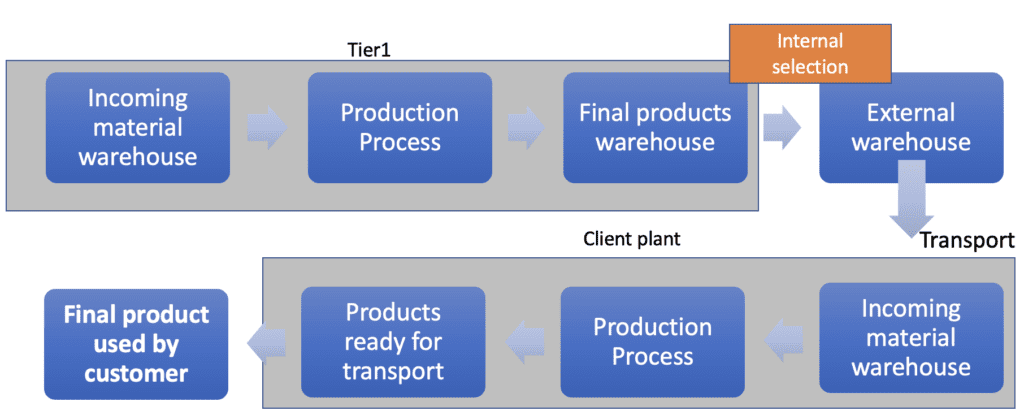Identification and traceability are two terms that are important from manufactured parts managing status point of view.
In addition, identification and traceability are a very important element of the quality problem analysis. Why? Because they allow to reduce the suspected population of parts in the organization’s and at the customer’s plant, and thus reduce costs.
Identification – show what you’ve got
When it comes to identification, it’s any type of component status that we have in production to define its purpose. It’s very important that there are no components on the production line that have an undefined status.
Why? Because if it is found by the client during the process audit, it can lead to additional escalation. It is, for example, a special status resulting from failure to meet the IATF requirement 9.1.2.1. Of course, such a situation may also take place during audits of certification bodies, corporate or internal Layered Process Audits (LPA).
Identification status types
It’s important that we’ll know what type of identification we have implemented in the manufacturing plant for the produced components. These include, among others, identification for:
- Work in progress material. This situation is most often presented in nest production. For example, stamping and then transporting parts to be welded
- Conform material
- Non-conform material. It’s most often stored in red containers and then transported to the scrap isolator.
- Material dedicated for selection. This status applies to a situation where we find a non-conform product during production. Then, we kick-off selection, starting from the warehouse of finished products, through production, to components “at the entrance”
- Material dedicated for repair and / or modification
- First good part approval. It’s a certification of process parameters and the production part performed by the quality department
- Material dedicated for tests, most often used to validate changes to the product during current production
Traceability – a key element of the risk analysis for suspected components
On the other hand, in terms of traceability, it is particularly important during potentially affected populations defining. Depending on the risk that is assigned to the manufactured product and customer requirements, it may include:
- Information from which production cell the component has been produced
- Operator number
- Production date – from hour to the shift date
- Machine identification on which the product was produced. Thanks to this, if we have three machines, we know that the interim containment action (ICA) can be related to the elimination of one of them and further implementation of the shipment for the customer with a smaller production capacity.
- Identification allowing to determine which sub-components are included in the manufactured final product

Fig. 1. Determining traceability is important at every stage of production in the organization’s and customer’s plant.
An increasingly common solution is to place this information in the form of QR codes on the final product. In addition, products affecting safety are scanned and assigned to a particular number of the produced car named also as VIN – Vehicle Identification Number. As a result, when the organization provides serial numbers for suspected parts, the customer easily connects them to the produced vehicles.
As you can see, identification and traceability are not the same. Additional requirements can also be found in one of the points of the IATF 8.5.2.1 standard. Identification and traceability – supplement.
What areas to check during identification and traceability implementation?
During assessment performed by customer or certification body auditor, or when you will be present on the production line, pay attention to whether there are any components somewhere that do not have traceability.
For example, when I was performing supplier audits, I looked into the leaders’ cabinets. Of course, this applies to the scenario for small-size components. It is also worth checking the spaces behind the machines for any components. Why? You may find that there are some very old components there.
Thanks to this, we can eliminate them from production and avoid complaints. An additional recommendation on my part is to perform an analysis in order to eliminate such a situation in the future.
Dariusz Kowalczyk


